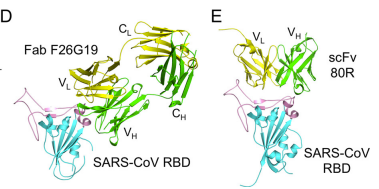Viruses are known to mutate, thereby escaping immune cells and evading vaccination. Given that there is one and the same specificity of the key to both the receptor on the infected cell causing the disease after cell entry as well as to the antibodies or immune cell receptors of the immune cells how can it be that a virus that has mutated thus escaping defense is still able to connect to cells of the body?
It should be one and the same key to one and the same lock. As it is the same key it seems logical that both locks - antibodies' and antigens' are identical, as they fit to the same key. If mutation leads to "unfitness" in respect of antibody, how can the key still fit to the body?
In the context of mutation and vaccination this question might intuitively be answered by "different epitopes".
Is there any opinion on that at all? Textbooks seem to be not explicit at all. Is it too trivial a question? Are there are two epitopes on viruses: one for the antibody, one for the body cell? Mutation somehow deliberately restricts itself to the former?
One line of thought added: if you think of some shared (intersectional) epitope it's one and the same mutation that influences both sides, adhesion to antibody and, plus, adhesion to target receptor. Logically, it is possible that there is one mutation that is successful in both ends, i.e. results in loss of antibody fit and improves adhesion to target cell at the same time. But then, illustrating my question, it is a question of probability - as on the antibody side it is the loss of fitness which should be - at the same time - be a gain on the side of adhesion to receptor. Intuitively, this is highly unlikely, with a shared epitope.
The above speaks for different, non shared epitopes, and a multistep strategy in the evolution of virus. Is it possible and is there any authority on my assuming that it is among those virus clones that do not lose their affinity to antibody and remain under attack (as losing antibody fit, see above, means losing target fit, in probability) that selection takes place: those who do not mutate away from antibody attack evolve receptor affinity, and become "a little bit better", in speed, attain advantage in targeting against being caught antibodies. This might explain and be coherent with CoV-2 making appearance not as a variant of CoV that antibodies would not reach anymore, but much more so as a variant that has improved its target cell affinity.
So, assuming relevant mutations being selected among those strains that remain within the reach of existiting antibodies and do not mutate away from the antibody side epitope would be consistent with findings that existing vaccines and the antibodies they induce remain valid against new and upcoming strains of CoV-19. If it were found that new strains are more pathogenic, that would be coherent with that assumpton, too.
For better understanding compare this passage of the answer giben: "... which do lose their fitness against the immune system, but undergo gene reshuffling with similar viruses and again become infectious." "Lose fitness against the immune system" in strict meaning of words would mean gaining fit the to the antibody - however, the author speaks of "becoming infectious", thus refering to target cells. This made me rethink the above to the following:
If you do not assume any shared, identical epitope of body cell (lose the fit to antibody means gaining fitness against the immune system, however at the same time losing fit against the target cells that define the disease) there is some successful "moving out" of the reach of antibody which means "sucess" and that same "moving out" of the realm of target cell epitope which means "failure", losing infectivity. At both sides it's just "into the negative", to lose a fit (however, success and failure very set apart). One has to acknowledge that both sides make sense: just losing fit to antibody is success (epitope to body receptor remains unchanged). For success of the virus on the body cell side, however, no loss will do, there must be a gain of fit to another receptor on body cell. Why then, to illustrate my question further, should a selective stress prefer to take the hard way: gain of function towards body cell, and not easily "fall apart" from the antibody fit, thus becoming fit against the immune system?
To sum up, two alternative answers seem possible: a. there are two separate epitopes; virus escape the antibody fit, and this suffices b. there indeed is a shared, common epitope: it is not enough to "opt out" and exit the antibody fit but one and the same mutation - as the primise is the existence of a shared, no separate epitope - must find a new fit on the body cell receptors side.
A third answer emerges, to me: Epitopes are separate, not shared, and mutation is a multi-step process. Then first, interestingly, the mutation to a new fit on the body target cell side should come first, as only this sequence - not the opposite - presevers selective pressure to escape the immune system in the following second mutation.

